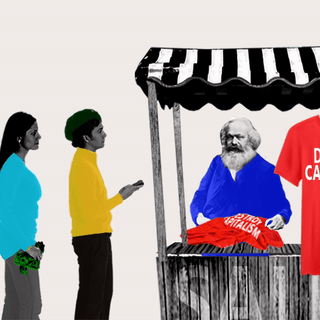
Can We Move On: From the Woman Whose Childhood Trauma Is Used to Add ‘Depth’ to Her Character
Once introduced, the female lead’s trauma is either summarily dismissed, or used to propel the male lead’s narrative forward.

In Can We Move On, we revisit old tropes and question whether they have any remaining cultural relevance.
What is common between Meri Pyaari Bindu, Raabta, and Half Girlfriend? In addition to having been released in 2017, the female leads in each of these movies also suffered from the “dead or damaged parent syndrome,” as one article describes it. Bollywood’s latest attempt to add depth to their female characters in a feeble, formulaic manner feels like the filmmakers’ way of telling feminists, “Well, look, we’ve shattered the glass ceiling by giving her a backstory — she’s not just ‘padding’ for the hero’s narrative anymore,” while patting themselves on the back for treading a path that was unexplored by their predecessors.
“How to make it look like you spent more than two minutes in writing your female lead and pretending to give her character? Simple. Just kill off her parents. Or show that she belongs to a broken home,” Debiparna Chakraborty wrote in 2017.
Per se, there isn’t a problem with depicting childhood trauma — in fact, in a country teeming with mental health issues while also denying their very existence, spreading awareness of how past traumas can impact one’s present is certainly laudable. Except, given how these issues are rarely treated with sensitivity or nuance on-screen, that’s not what filmmakers are actually interested in. The subplot of childhood trauma almost never gets the space it deserves in the narrative — making it evident that the trope simply serves as a means to silence critics, or worse still, act as a device to give male heroes someone to “rescue.”
In Meri Pyaari Bindu, the titular character, played by Parineeti Chopra, loses her mother in a car crash that she blames her father for. It results in unresolved trauma that dooms her future relationships. In Raabta, Saira, played by Kriti Sanon, also loses her parents in an accident that leads them to drown to death — leaving her with a chronic fear of water. In these films, the trauma of Chopra’s and Sanon’s characters is often viewed through a lens that’s pitying — and, in places, perhaps, even judgmental — denying them the space to reckon with their unresolved issues as adults with agencies.
Related on The Swaddle:
‘Gehraiyaan’ Shows How Childhood Traumas Can Shape People’s Narratives With Sensitivity
“Bindu is given exactly one scene with her father to unload nearly two decades’ worth of emotional cargo… Tia is given a one-line background story… [T]here isn’t even an entire scene dedicated to convey[ing] that Kriti Sanon’s Saira lost her parents in a car crash,” Chakraborty writes, contrasting the treatment of female leads with their male counterparts, arguing, “[I]f you could dedicate enough time to show Sushant Singh Rajput’s Shiv’s entire family, his friends, his spiritual-religious inclinations, and even concoct a friend-sidekick character for him, why is it so difficult to do the same for the female lead’s character?”
It’s unfair, however, to state that the subplot of the female lead’s trauma is always summarily dismissed. There exist movies — like Half Girlfriend — where the trope plays out to propel the narrative of the leading man. Having grown up in an abusive environment, Shraddha Kapoor’s character, Ria, develops issues that prevent her from fully committing to the man she loves. And then, the focus shifts to the journey of this man, played by Arjun Kapoor, as he navigates his love life.
So far so bad. Then, it gets worse.
In last year’s Atrangi Re, the childhood trauma endured by Sara Ali Khan’s character, Rinku — who, as a child, witnesses her parents burning to death in front of her eyes — is romanticized in course of the movie. “From time to time, relying on Rinku’s hallucinations as a plot device to drive the overarching narrative of ‘dramatic love,’ the movie does little to destigmatize what its own protagonist is going through. In fact, making her psychosis the biggest reveal of Atrangi Re, too, feels discomfiting… Moreover, the narrative falls prey to yet another trope: “love cures all.” Rinku’s childhood trauma led her to believe in the existence of a character, who didn’t exist; Vishu’s [played by Dhanush] love brings her back in touch with reality,” The Swaddle’s take on the movie had noted.
Moreover, in both Half Girlfriend and Atrangi Re, the childhood trauma of the female leads — serving as plot devices for the respective romances to unfold — almost ends up defining their entire personality. In doing so, it furthers harmful stereotypes about mental health — a subject that is already steeped in stigma in our country.
Related on The Swaddle:
It is rather telling that Bollywood can’t fathom any other way of conceptualizing “interesting” women sans a hero’s involvement. In contrast, traumatized male characters are depicted as tortured geniuses or passionate lovers, whereas women are often relegated to the status of dysfunctional adults, if not damsels in distress. The key difference, here, is agency: the same trope in men gives them agency to act in certain ways, whereas in women, it often serves as a device to question their agency. Moreover, obligatorily infusing trauma into the narratives of female characters — simply to make them appear interesting — does a great disservice to lived experiences of people, who have genuinely undergone trauma.
There is a rich repository of pain, frustration, and rage to draw from when it comes to female characters in films: to imply, then, that a dead parent might be the only plausible way a woman can have a personality with depth, undermines everything else women go through in order to be taken seriously.
So, it would appear, that no matter how Bollywood chooses to employ the trope, it falls short of doing justice to it. But that’s not true either. 2014’s Highway and this year’s Gehraaiyaan serve as great examples of how to depict women’s trauma. In neither of the instances were the experiences of Bhatt’s and Deepika Padukone’s characters romanticized. And, what’s better, they were actually granted the space they deserved in the respective narratives of the movies.
Suggesting that Indian cinema isn’t equipped to tackle the complex, unresolved childhood trauma of women puts filmmakers off the hook. Instead, holding them accountable to respectfully deal with a subplot they chose to introduce in their narrative appears to be a better solution, perhaps, than simply suggesting we lock the trope away in boxes with heavy iron lids and toss them into the ocean.
Devrupa Rakshit is an Associate Editor at The Swaddle. She is a lawyer by education, a poet by accident, a painter by shaukh, and autistic by birth. You can find her on Instagram @devruparakshit.
Related


Anti‑Capitalism Is Cool. When Will It Be Revolutionary Again?
